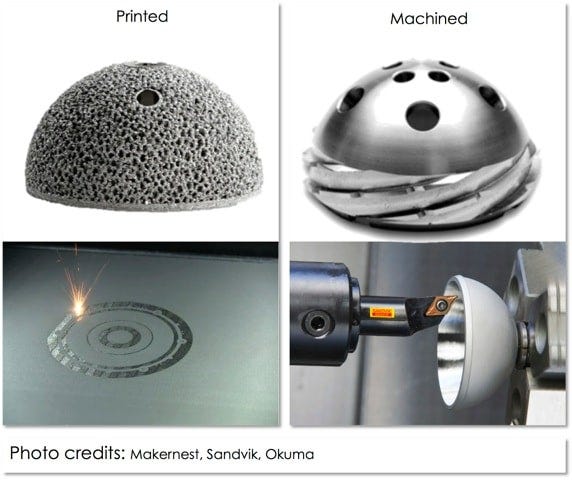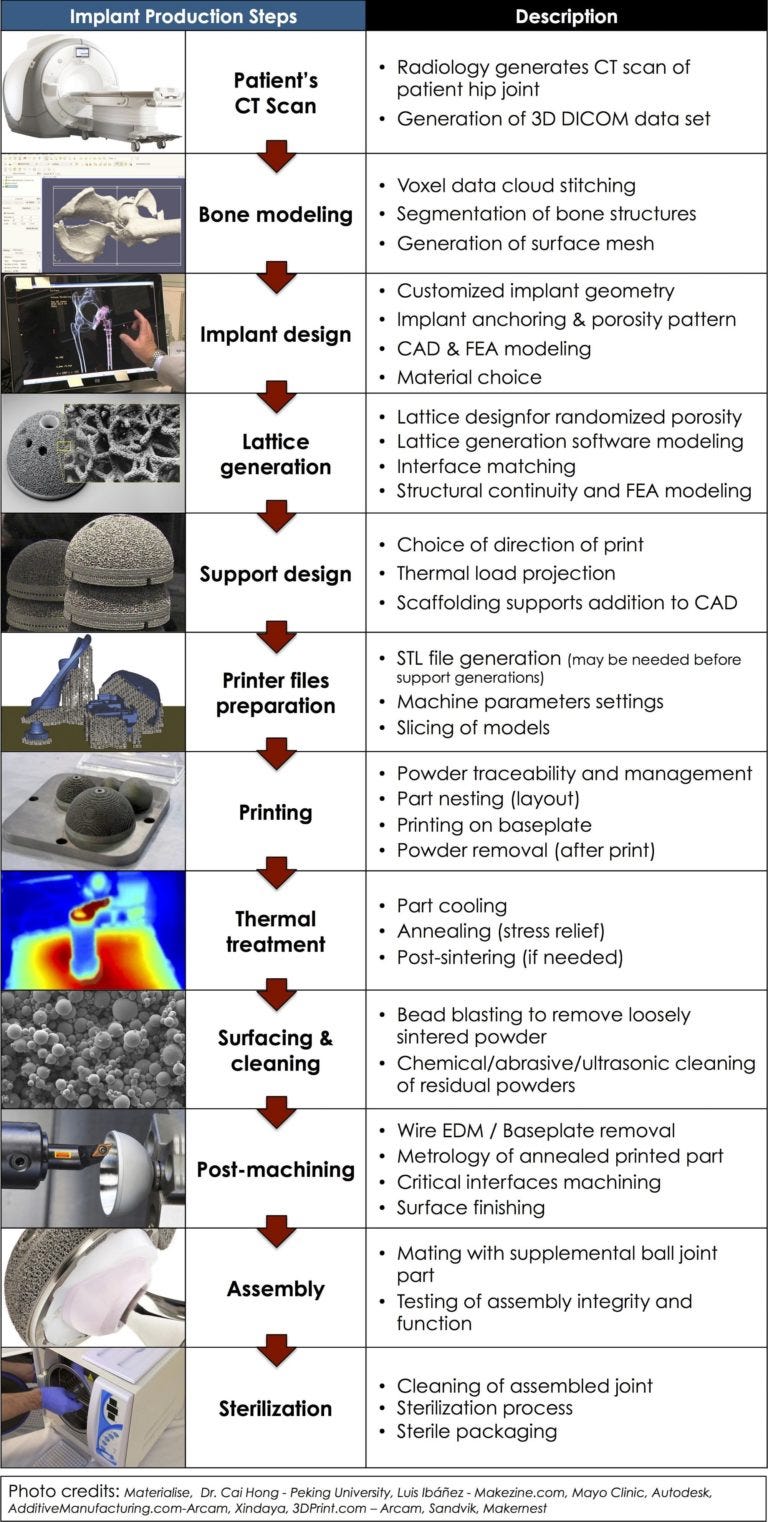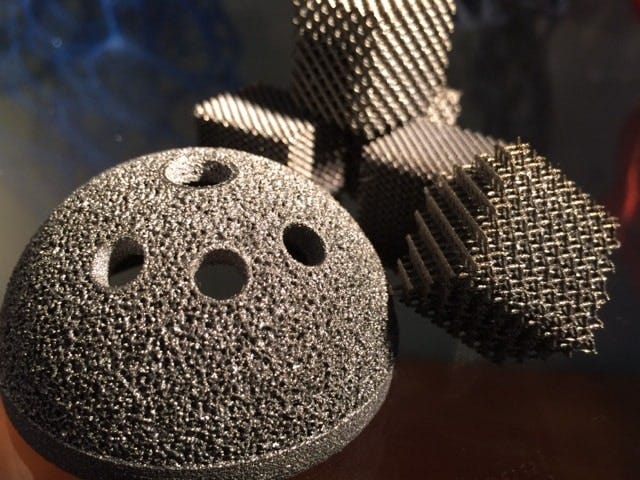[et_pb_section admin_label=”section”]
[et_pb_row admin_label=”row”]
[et_pb_column type=”4_4″]
[et_pb_text admin_label=”Text”]

Medical applications are among the top growing use cases of metal 3D printing (additive manufacturing). Unlike aerospace applications where weight reduction is the key benefit of interest, for medical users, the capability of mass customization is where 3D printing becomes an enabling and powerful tool for the fabrication of :
- Medical models (for surgery or diagnostics assistance)
- Surgery guides (to ease and optimize the surgery process)
- Body implants (customized replacements)
In this article, we are focusing on body implants, for which the key benefits are a) ease of customization for each patient, and b) enhanced part performance (better mechanical strength, better fusion with the bone structure, better fit, fewer screws required, etc.)
However, before thinking that surgeons will soon be producing their own metal implants in their office, let’s have a closer look at what are the manufacturing steps required before to get a very cool-looking implant:

Implant manufacturing: not quite a “push-of-a-button” process…
Let’s take for example the production process of a hip socket implant (Acetabular cup). Although 3D printing may sometimes appear to be a “black magic” technology where a finished part appears out of nowhere, the reality of making an implant involves several steps; 3D printing being only one of them. The following table summarizes the high-level fabrication steps:

This implant fabrication process is obviously not exhaustive of all the details associated with each step, but rather demonstrates how the 3D printing portion of an implant production is only a small, yet important part of it. Similarly as when an implant is manufactured using conventional technologies such as CNC machining, when using 3D printing, the fabrication process is tailored and adapted to the way the part is being fabricated.
The key in using 3D printing, especially when using metal alloys (due to its higher level of complexity), is to ensure that the use of the printing step adds value to the “production step chain”, such as the benefits listed earlier. Many times, it brings performance value, but can often be challenging from a business/economical standpoint.
In our next blogs, we will dive deeper into some of the fabrication steps of an implant, especially those where we optimize the randomized porosity and custom fit the implant to the modeled bone structure of the patient.

Medical device manufacturing CAN be, and IS being simplified and/or enhanced by metal Additive Manufacturing (AM). The benefits of metal 3D printing are real and seen nowadays in many published use cases. However, the process required to reach them still requires a high level of expertise, a deep understanding of the AM technologies and processes, as well as a high level of hands-on experience, just like with any other manufacturing technology.
3D printing is an added tool to our modern “manufacturing arsenal”, and like any tool, it has its specific set of benefits and applications which is called to grow as users explore this enabling technology, equipment price point lowers and their quality/performance improves. Medical implants is a well-suited application for it.
Read more about 3D DICOM data set and bone modeling in 3DHeals blog: https://3dheals.com/segmentation-real-struggles-behind-converting-dicom-patient-specific-3d-printable-models/
About the Author :


Steve Fournier is founder and CEO of Makernest; an Additive Manufacturing (AM) consulting group based in the Bay Area, California, USA, where he and his team help industrial and research users to explore and maximize the benefits of 3D printing for their applications. Mr. Fournier developed and managed the AM program for the semiconductor market leader KLA-Tencor Corporation for over 3 years. In addition, for over 15 years, he worked on lasers, systems integration, plasma accelerators research, semiconductor metrology, additive manufacturing engineering and program management in industrial and national lab environments. He has an engineering physics academic background from University Laval and University of Toronto (Canada). He is a frequent AM invited speaker and trainer, and received numerous industrial awards over the years, and most recently, the Department of Energy Secretary Achievement team award in 2014.
[/et_pb_text]
[/et_pb_column]
[/et_pb_row]
[/et_pb_section]

